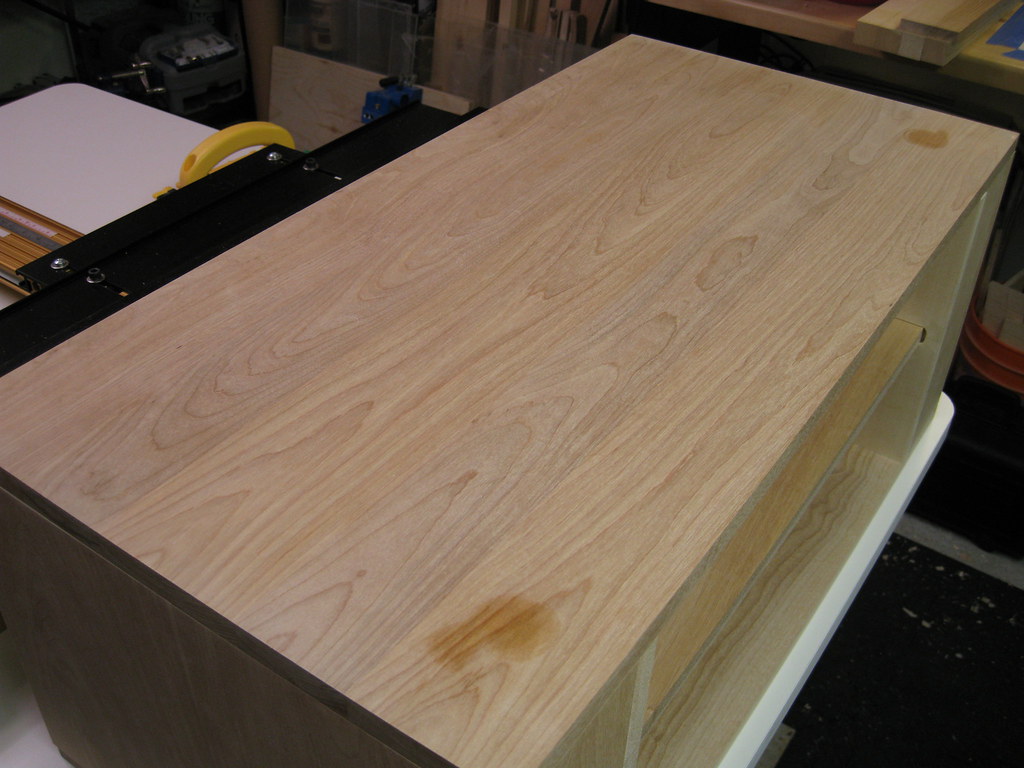When oil stains seep into wood, it’s like an unwanted guest overstaying their welcome on your favorite armchair.
But fret not, there are ways to bid farewell to these stubborn marks.
From simple household remedies to specialized techniques, the path to pristine wood surfaces may not be as elusive as it seems.
We prepared tips that will assist you in revitalizing your wood to its former glory.
Identifying Oil Stains on Wood
If you notice dark, greasy spots that seem to have seeped into the wood fibers, you may have identified an oil stain on your wood surface.
Oil stains on wood can be a nuisance, disrupting the natural beauty of the material. To remove such stains, you need to act promptly and effectively.
Begin by using a clean cloth dampened with water to gently dab at the stain.
Avoid rubbing vigorously, as this can push the oil deeper into the wood. Instead, blot the area to lift as much of the oil as possible.
After blotting, allow the wood to air dry completely. If the oil stain persists, you may need to take further steps to remove it.
Deep-seated oil stains might require more advanced techniques or products specifically designed for wood surfaces.
It’s important to address oil stains promptly to prevent them from setting in and causing long-term damage to the wood.
Household Items for Oil Stain Removal
When dealing with oil stains on wood, consider using common household items that can effectively lift and remove the stubborn marks.
Baking soda or sawdust are excellent choices as absorbent powders to help lift oil stains from wooden surfaces. These materials work by absorbing the oil, making it easier to remove the stain.
Another useful method is to create a soapy solution using dish liquid and water, which can break down and lift oil stains from wood effectively.
Additionally, using absorbent materials like thick brown paper and baking soda can aid in absorbing and lifting oil stains from wooden surfaces.
To tackle stubborn stains, a combination of absorbent powders and gentle scrubbing can be highly effective in removing oil stains from wood. By utilizing these household items, you can effectively tackle oil stains on wooden surfaces with ease.
Techniques for Removing Oil Stains
To effectively remove oil stains from wood, consider utilizing a vinegar and water solution for hand oil stains on furniture.
Mix equal parts of white vinegar and water, then dampen a clean cloth with the solution and gently blot the affected area.
For oil build-up or stubborn stains, turpentine can be effective in dissolving and lifting the oil from the wood surface. Apply a small amount of turpentine on a clean cloth and rub it onto the stain in a circular motion.
If the oil stains persist, mineral spirits can be used for a more thorough cleaning process. Remember to work in a well-ventilated area and follow safety precautions when using mineral spirits.
Additionally, for deep oil stains that have penetrated into the wood, create a baking soda paste by mixing baking soda with water and apply it to the affected area.
Allow it to sit for a few hours before gently scrubbing it with a scrub brush and wiping it clean with a damp cloth.
Preventing Future Oil Stains
To prevent future oil stains on wood surfaces, incorporate the regular use of coasters and placemats as protective barriers. These simple items act as shields, preventing oil stains from directly contacting the wooden surfaces.
Additionally, wiping up spills immediately is essential in avoiding oil penetration into the wood.
Address any accidental spills promptly with a clean cloth to prevent staining.
Applying a protective sealant or wax on wood floors and other wooden surfaces creates a barrier that repels oil, keeping the wood protected.
Regularly cleaning and polishing wood surfaces not only enhances their appearance but also maintains a protective layer that aids in preventing oil stains.
Should oil stains occur, use appropriate cleaning methods to address them promptly and effectively to prevent deep penetration into the wood.
By following these preventive measures, you can keep your wooden surfaces free from unsightly oil stains and maintain their natural beauty for years to come.
Final Tips for Wood Restoration
As you progress towards the final phase of wood restoration, honing in on nuanced techniques can elevate the outcome of the restoration process, allowing for a thorough rejuvenation of the wood surfaces.
When dealing with stubborn oil stains on wooden furniture, consider using a mixture of baking soda and mineral spirits. This powerful combination can effectively lift stains without causing damage to the wood’s finish. Apply the mixture to the affected area and gently scrub with a damp cloth to remove the stains.
After successfully removing the oil stains, it’s vital to restore the wood’s luster and protect it from future damage.
One way to achieve this is by applying Tung oil, which not only enhances the wood’s appearance but also acts as a protective sealant. Additionally, consider polishing or waxing the wood to further enhance its shine and durability.
Remember to follow specific instructions from reliable sources to confirm successful oil stain removal and wood restoration.
By incorporating these final tips into your wood restoration process, you can achieve a beautifully rejuvenated and protected wooden surface.
Conclusion
To sum up, removing oil stains from wood requires patience and the right techniques.
By identifying the type of stain, using household items like detergent or mineral spirits, and taking preventive measures, you can restore the beauty of your wood surfaces.
Remember to always test a small area first before applying any cleaning solution and to take care not to oversaturate the wood. With these tips, you can effectively remove oil stains and maintain the natural beauty of your wood furniture.


Leave a Reply